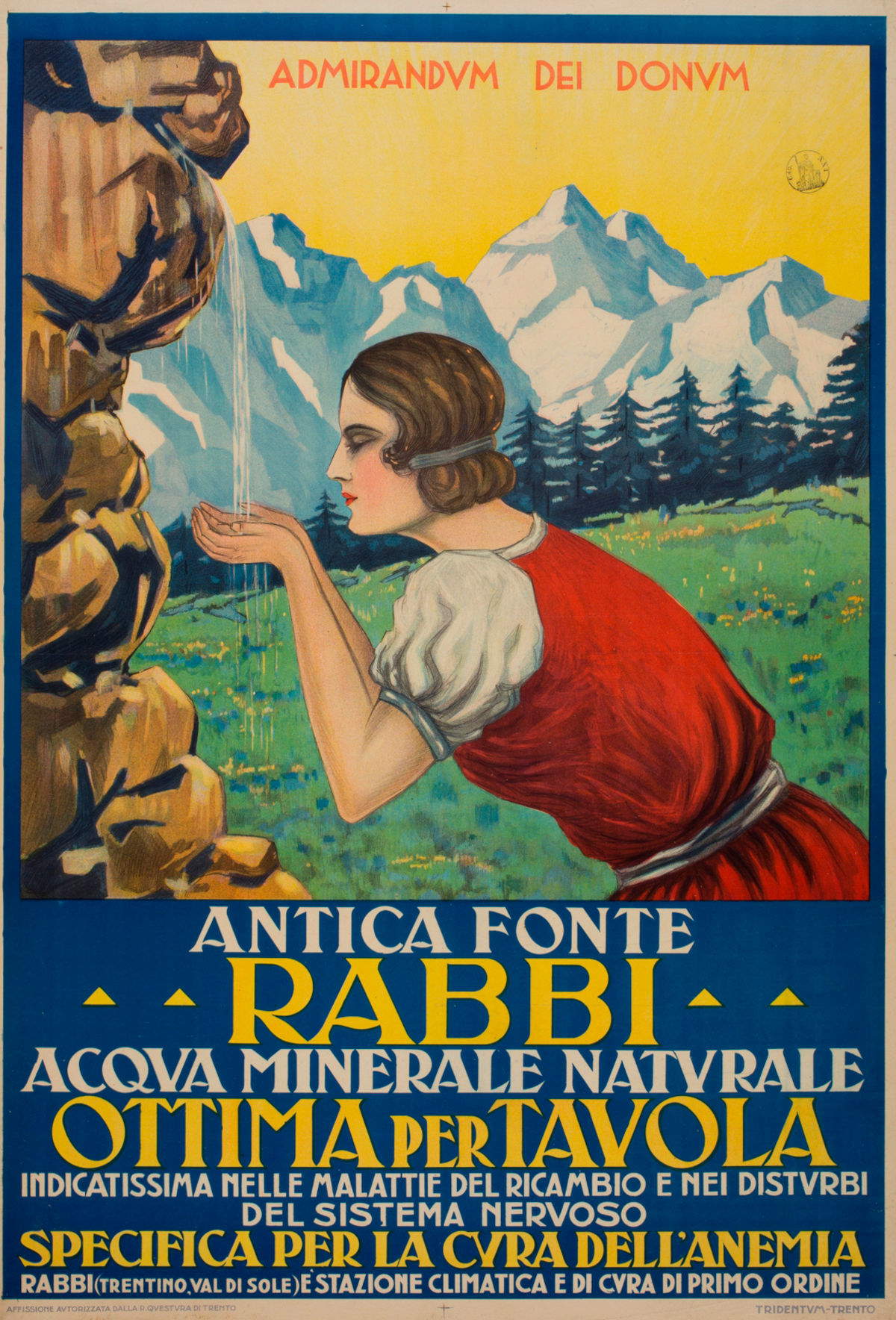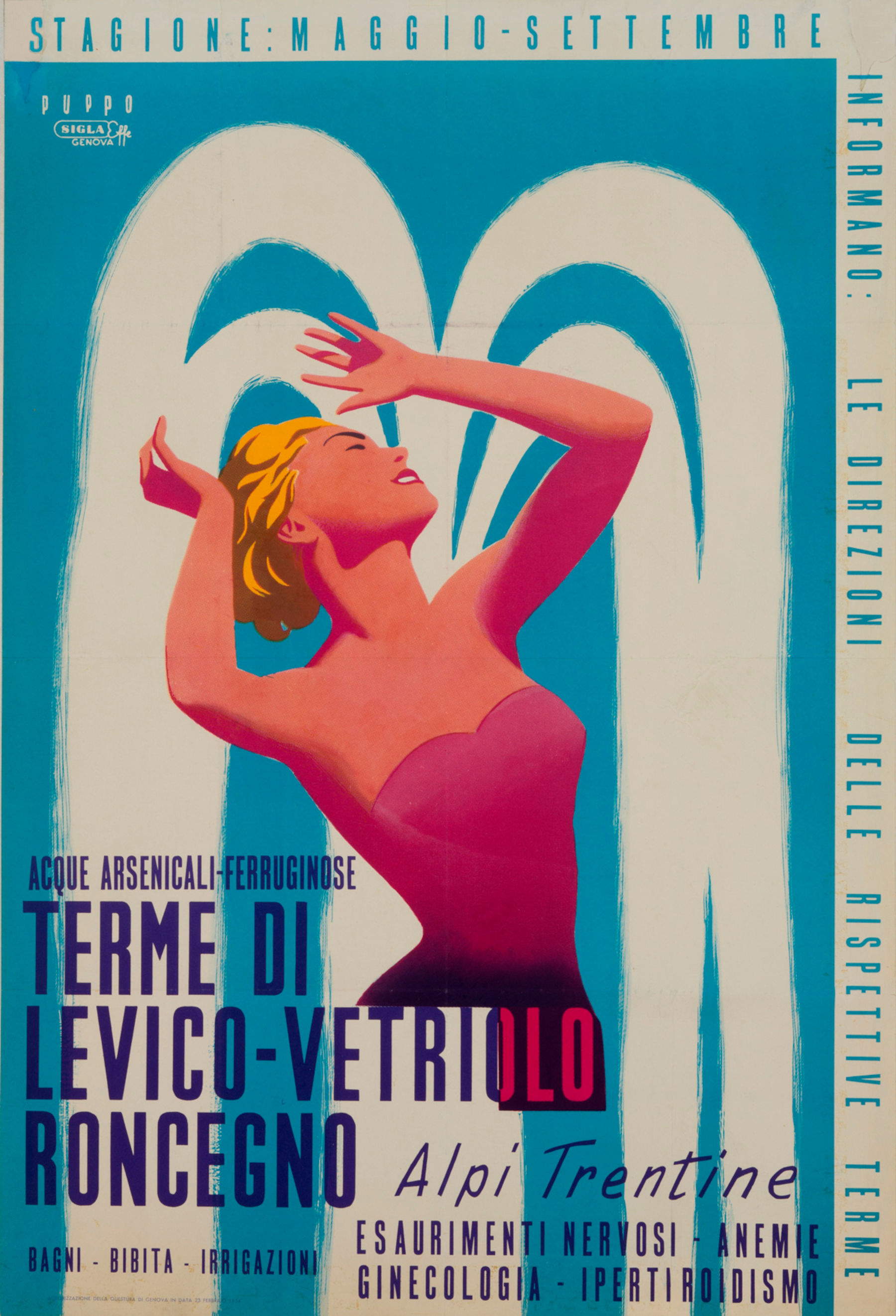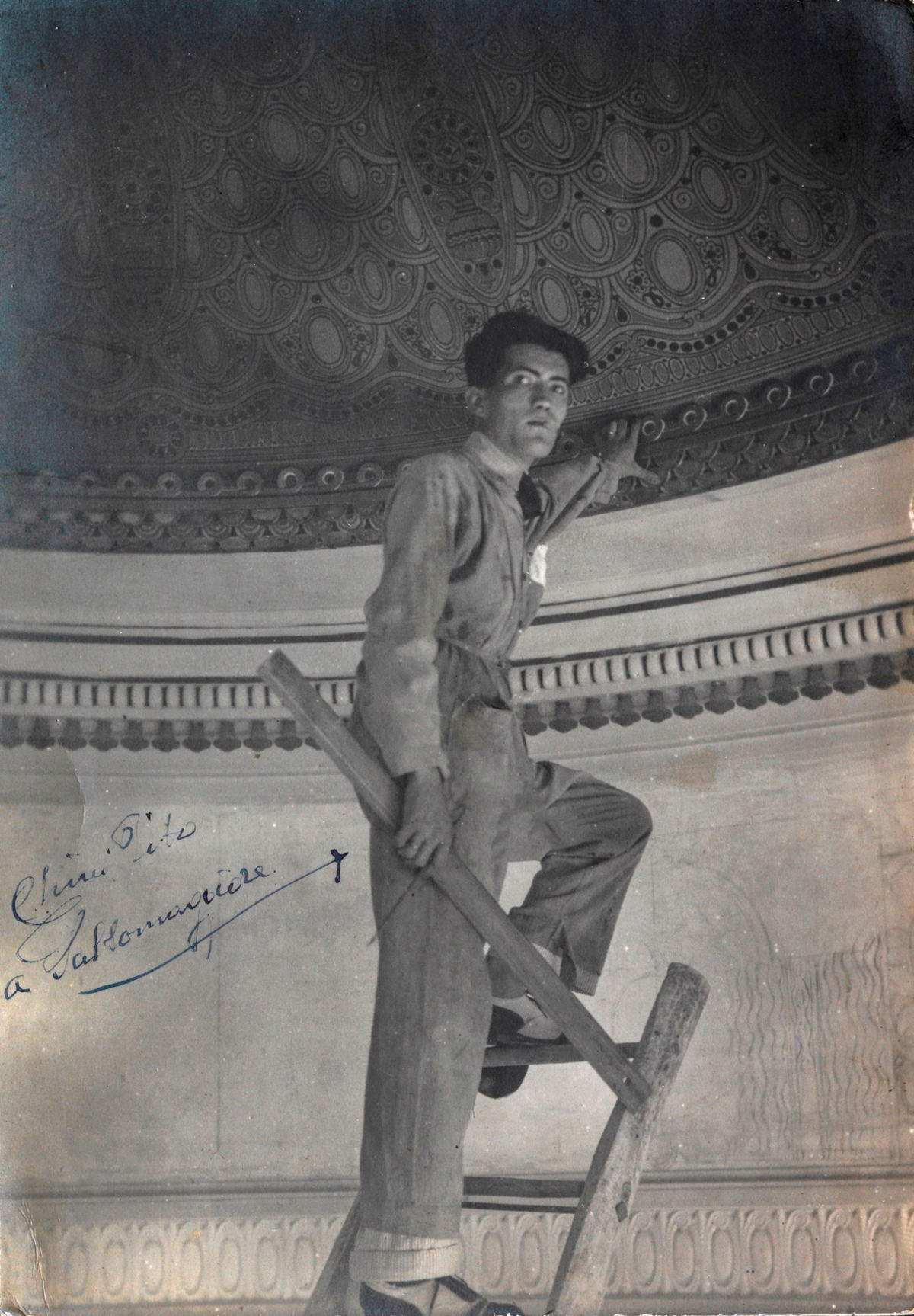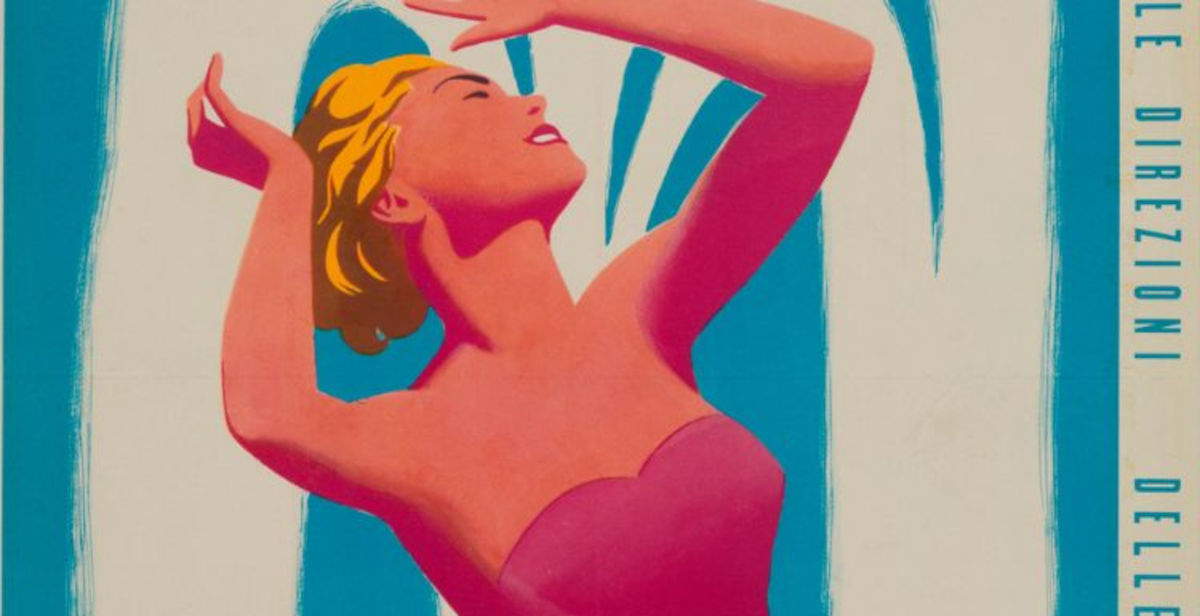From June 20 to November 2, 2025 Castel Caldes in Trentino hosts the exhibition Antiche fonti. Tito Chini and Spa Culture in Trentino, an exhibition dedicated to one of the most significant historical and social phenomena for the region: thermalism. The exhibition project is curated by Elisa Nicolini and Roberto Pancheri, curators of the Museo del Castello del Buonconsiglio, and is realized with the support of the Azienda per il Turismo (APT) della Val di Sole, in collaboration with Terme di Pejo e di Rabbi. The event, sponsored by the Buonconsiglio Castle Museum, focuses on the evolution of spa tourism in the Trentino region, with particular attention to the period between the late 19th century and the early decades of the 20th century, an era marked by the spread of spa resorts as important centers of treatment and recreation for the wealthy classes.
The thermal waters of the main spas of Pejo, Rabbi, Levico-Vetriolo, Roncegno, and Comano, still renowned for their therapeutic properties, represented a key attractive pole for more than a century.
Between the conclusion of Habsburg rule and the 1930s, Trentino experienced an intense phase of development associated with the so-called Belle Époque, during which the spas became landmark destinations for Mitteleuropa and the Kingdom of Italy. The process also involved the renovation of tourist infrastructure and the architectural upgrading of the establishments, many of which adopted decorative designs that involved artists specializing in interior painting, with aesthetically outstanding results.


The work of Tito Chini (Florence 1898 - Desio 1947), a Florentine-trained painter and ceramist who belonged to a historic family of decorators and founders of a well-known kiln in Borgo San Lorenzo, Mugello, fits into this historical and cultural framework. After making major decorative interventions in Tuscany and Veneto, Chini was called to Vetriolo, a spa town in the Val di Sole, in 1936 to decorate the Stabilimento Termale di Vetriolo. Although the building was decommissioned and demolished in 1997, part of the interior decorations were saved by the Ufficio Beni Storico-Artistici of the Autonomous Province of Trento, which provided for the detachment and recovery of the wall paintings and mosaics of the facade, thus preserving an important fragment of the history of thermalism in Trentino. The exhibition offers the Vetriolo paintings to the public for the first time, alongside previously unpublished preparatory sketches and a selection of ceramic artifacts from the Borgo San Lorenzo factory. The materials contribute to a specific focus on Tito Chini and the stylistic context of Art Deco, which influenced the decorations of the spa establishments of the time.



The exhibition develops further with an in-depth study dedicated to the territory of Val di Sole, breaking down into thematic sections that reconstruct the history of the main spas, including Bagni di Rabbi and Fonti di Pejo. The exhibition also includes materials related to other spa sites in Trentino, such as Levico and Roncegno, presenting a rich variety of documents and objects that testify to the spa experience in the region. These include period medical and scientific publications, historical photographs and postcards, portraits of distinguished guests, and objects of use related to the use of the healing waters. A particularly interesting item is the advertising posters, often produced with high artistic quality, which represent the first tools for promoting tourism in the area. The posters, on loan from private collectors and from the famous Salce Collection in Treviso, also illustrate the evolution of visual language and aesthetic taste between the 19th and 20th centuries.
The section dedicated to the Sources of Rabbi presents an in-depth look at the figure of Antonio Stoppani (Lecco 1824 - Milan 1891), a geologist and writer known for the volume Il Bel Paese, a work aimed at spreading knowledge of the Italian territory from a geographical and naturalistic point of view and promoting a sense of national identity. Stoppani stayed several times in Rabbi and contributed to making the area known through specific publications, strengthening the link between Trentino’s natural and cultural heritage and its image within the Italian landscape.
 |
| Ancient hot springs in Trentino: the exhibition on Tito Chini and historical thermalism at Castel Caldes |
Warning: the translation into English of the original Italian article was created using automatic tools. We undertake to review all articles, but we do not guarantee the total absence of inaccuracies in the translation due to the program. You can find the original by clicking on the ITA button. If you find any mistake,please contact us.